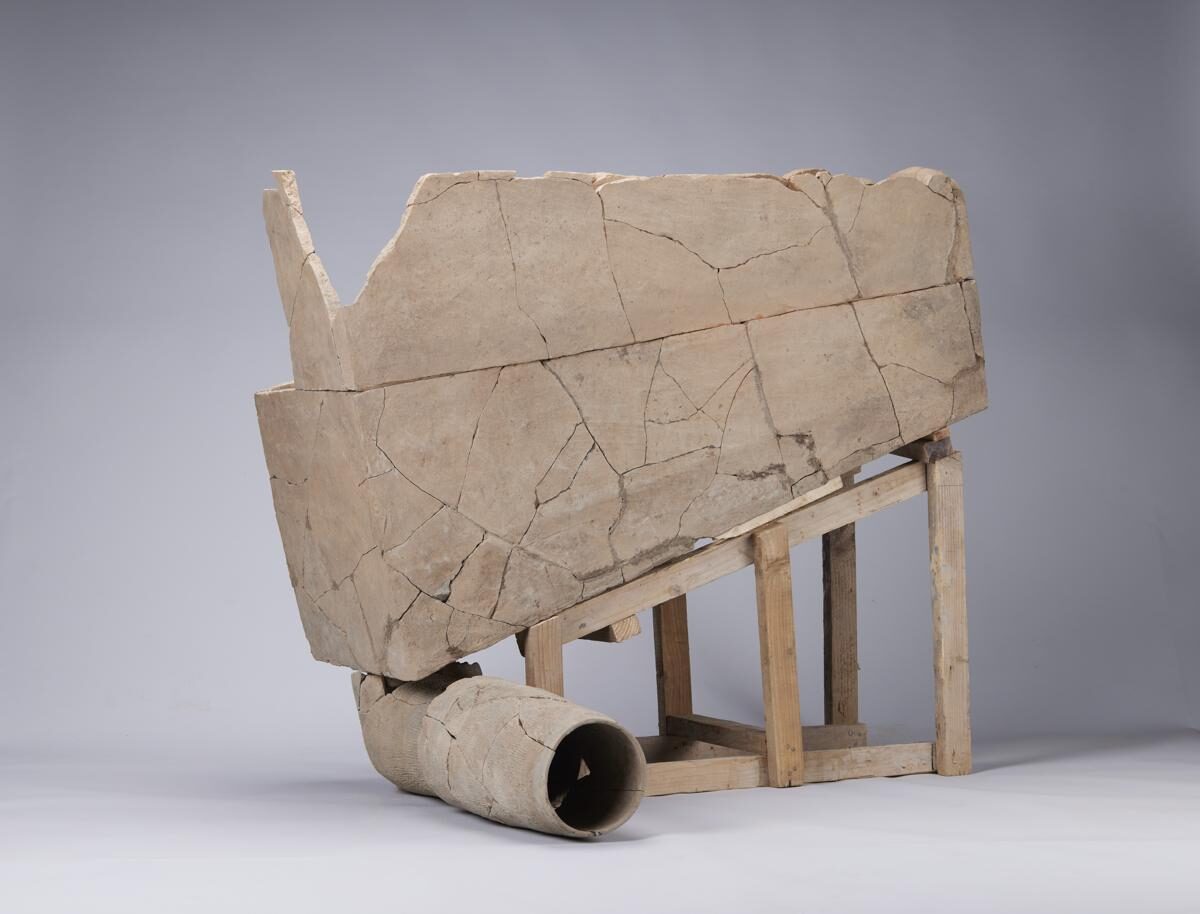
© China DailyBroken parts of the toilet, including a bent pipe, were unearthed from the Yueyang archaeological site in Xi'an, Shaanxi province, last summer and pieced together for months before researchers released details on Wednesday.
has piqued the interest of archaeologists who are trying to find out what people ate during that time by analyzing soil samples collected from it.
Broken parts of the toilet, including a bent pipe, were unearthed from the Yueyang archaeological site in Xi'an, Shaanxi province, last summer and pieced together for months before researchers released details on Wednesday.
Discovered amid the ruins of a palace in the ancient Yueyang city, the toilet is believed to have been used by Qin Xiaogong (381-338 BC) or his father Qin Xian'gong (424-362 BC) of the Qin Kingdom during the Warring States Period (475-221 BC), or by Liu Bang, the first emperor of the Han Dynasty (206 BC-AD 220). The palace was possibly used for administrative affairs.
A "luxury object" such as a flush toilet would only be used by very high-ranking members of the society during that time, according to Liu Rui, a researcher at the Institute of Archaeology at the Chinese Academy of Social Sciences, who was part of the excavation team at Yueyang.
"It is the first and only flush toilet to be ever unearthed in China. Everybody at the site was surprised, and then we all burst into laughter," he said.
The toilet bowl was placed indoors, with the pipe leading to an outdoor pit, he said, adding that servants probably poured water into the toilet every time it was used.


Comment: See also:
- The Seven Destructive Earth Passes of Comet Venus
- The Golden Age, Psychopathy and the Sixth Extinction
- The Cs Hit List 07: Sun Star Companion, Singing Stones and Smoking Visions
- Crannogs: Neolithic artificial islands in Scotland stump archeologists
- Book Review: Where Troy Once Stood
And check out SOTT radio's: